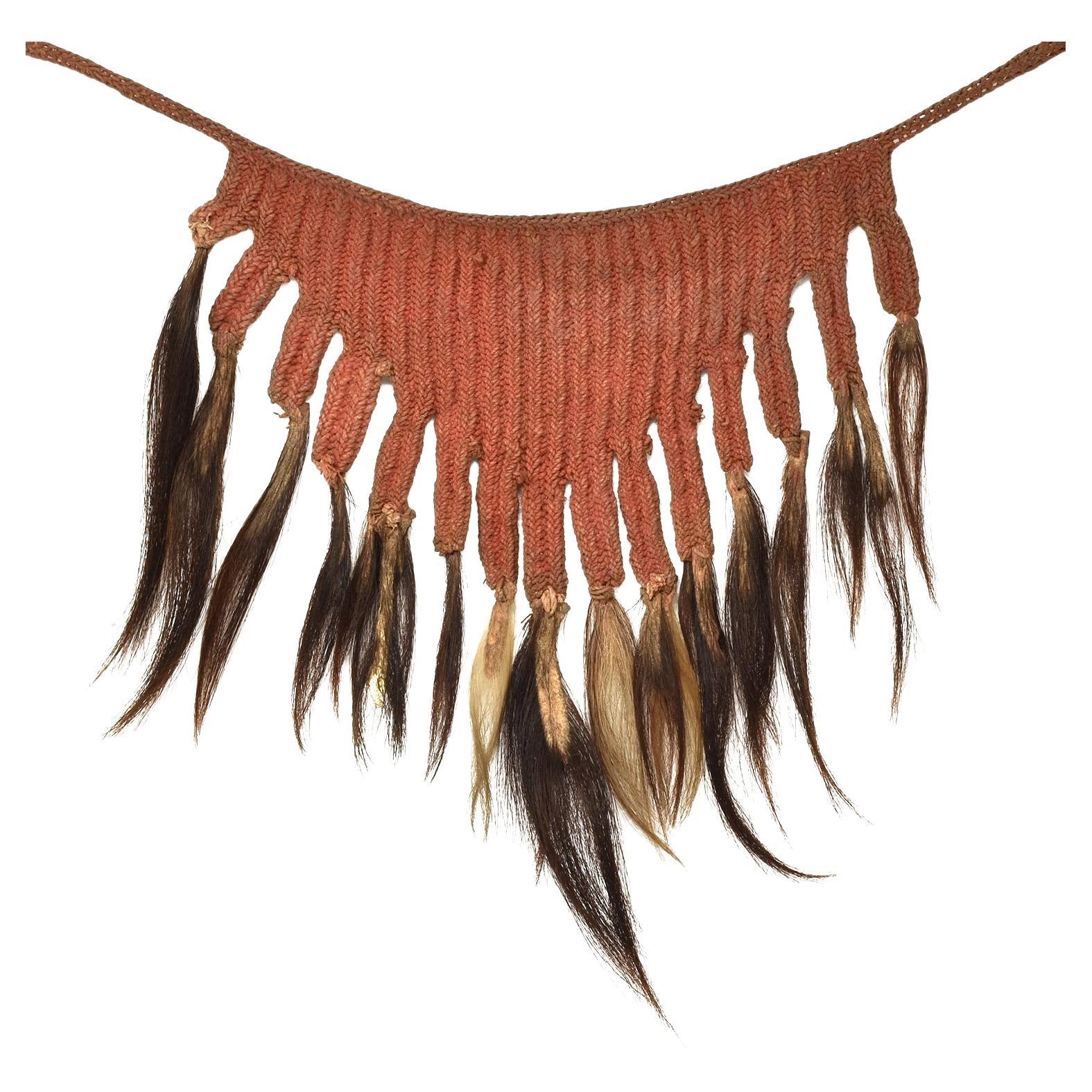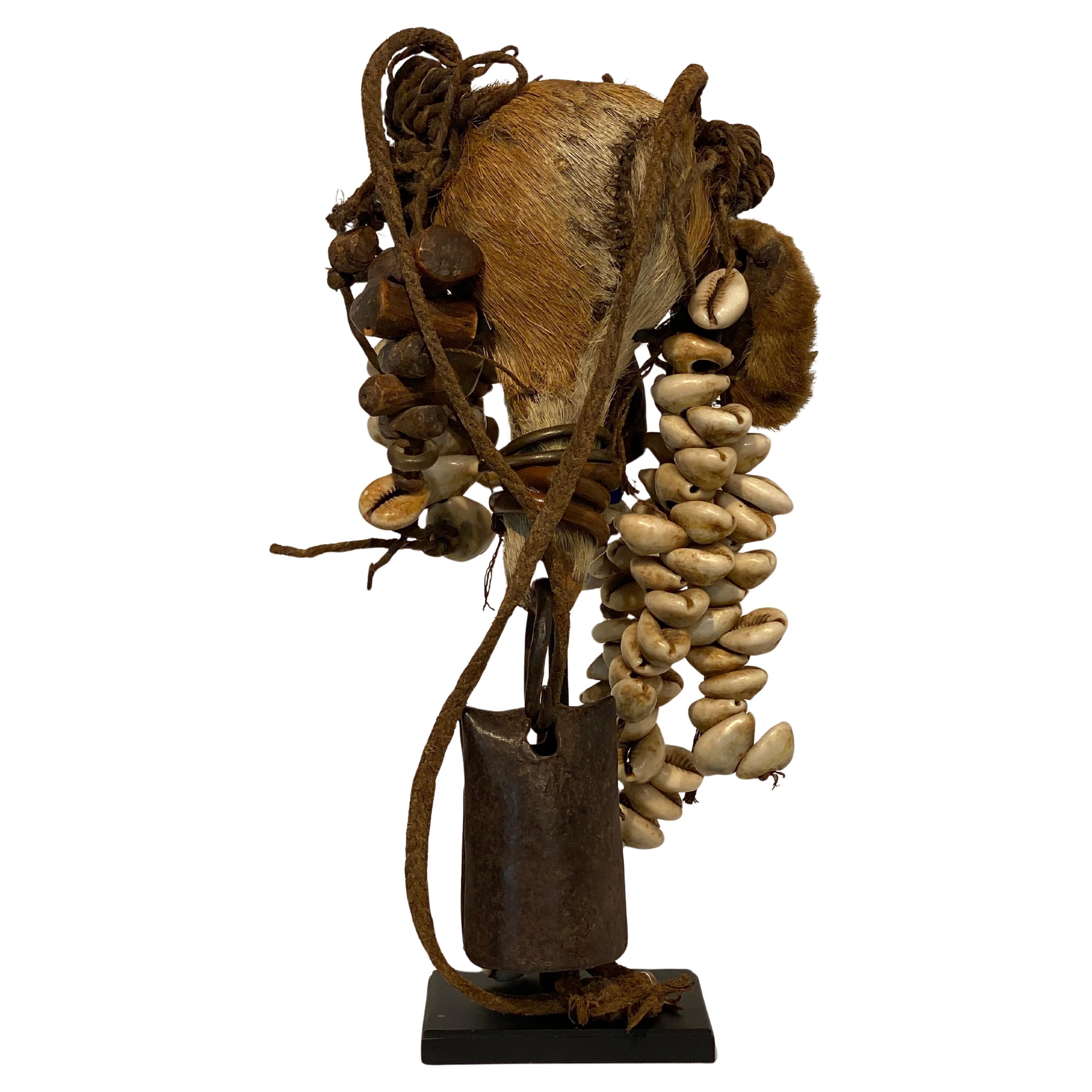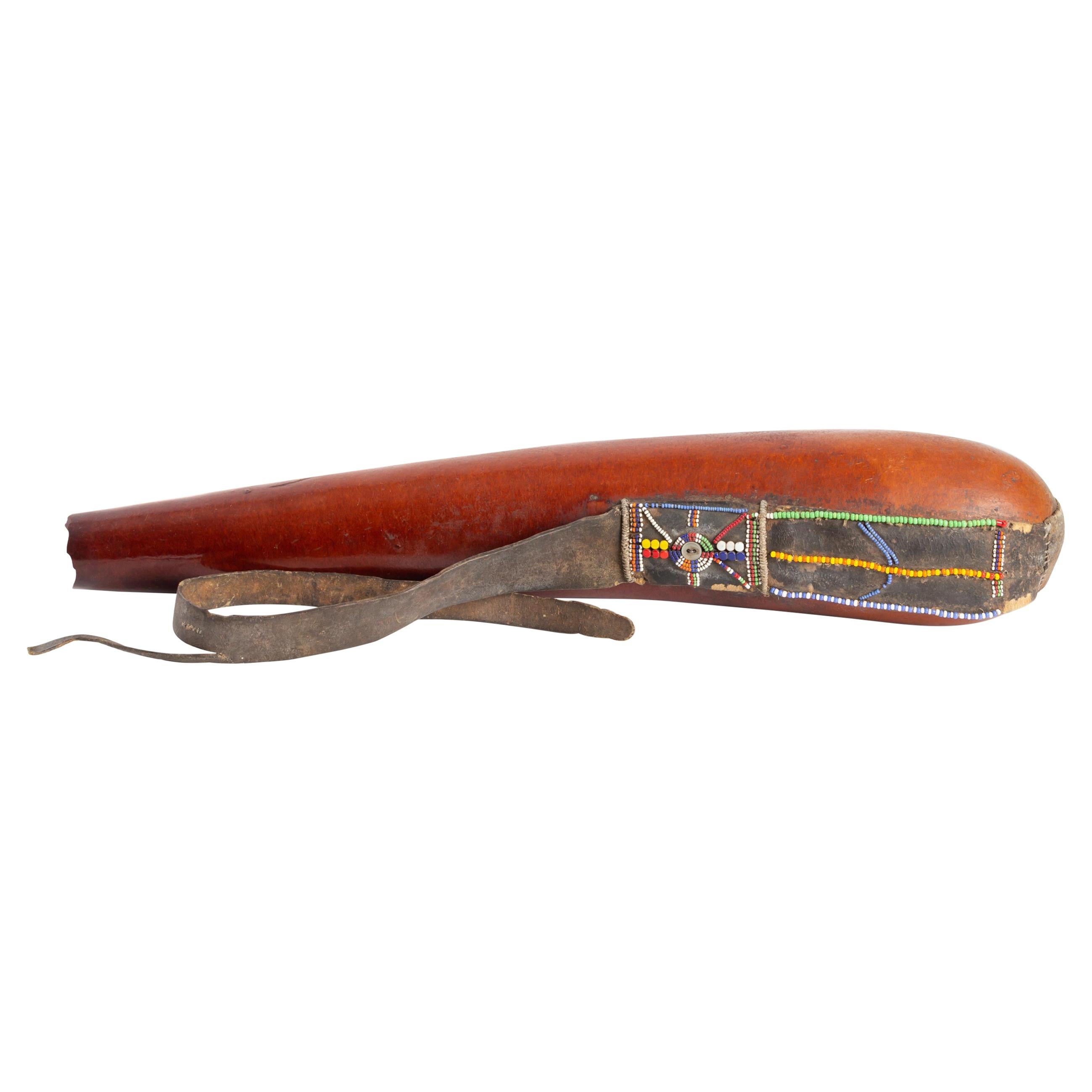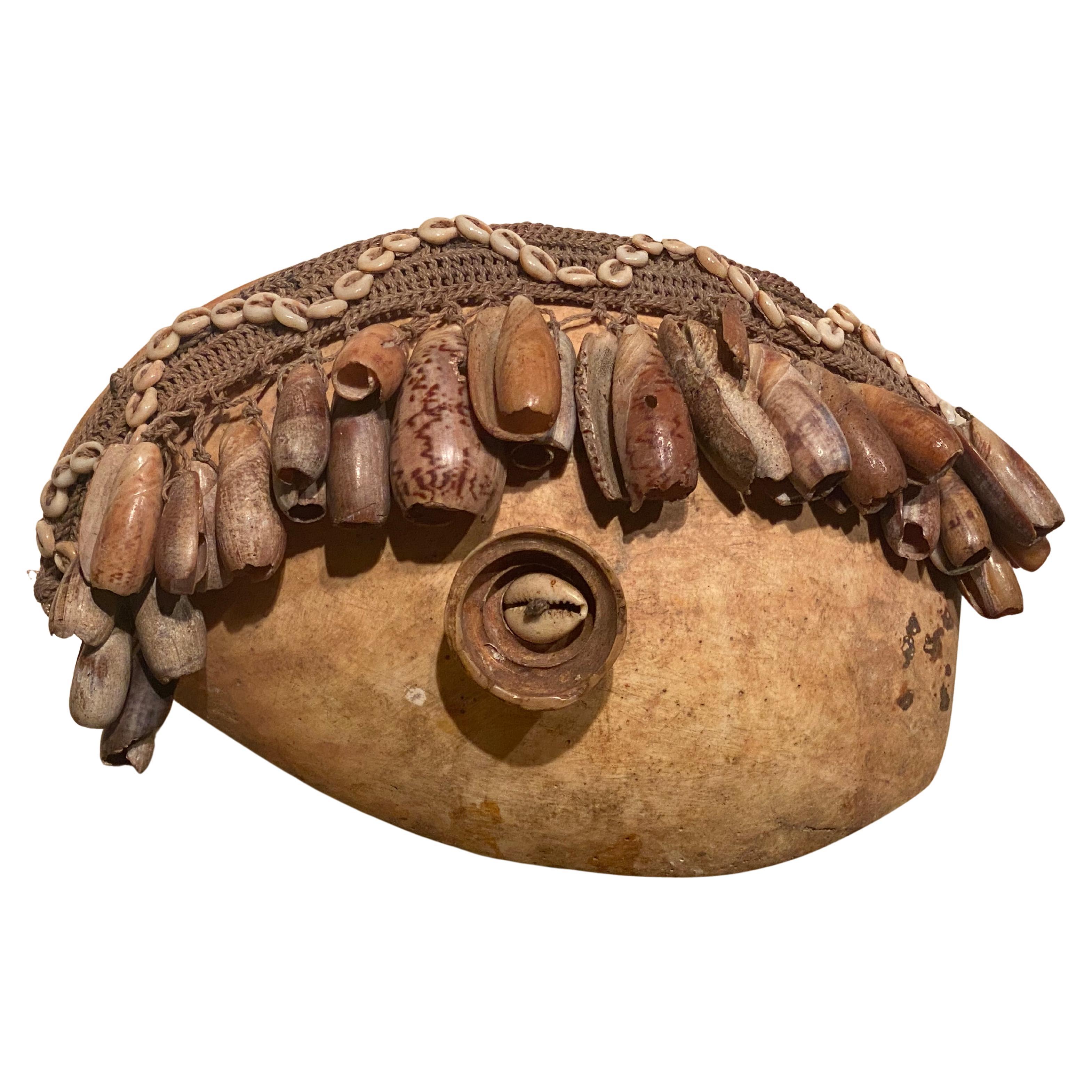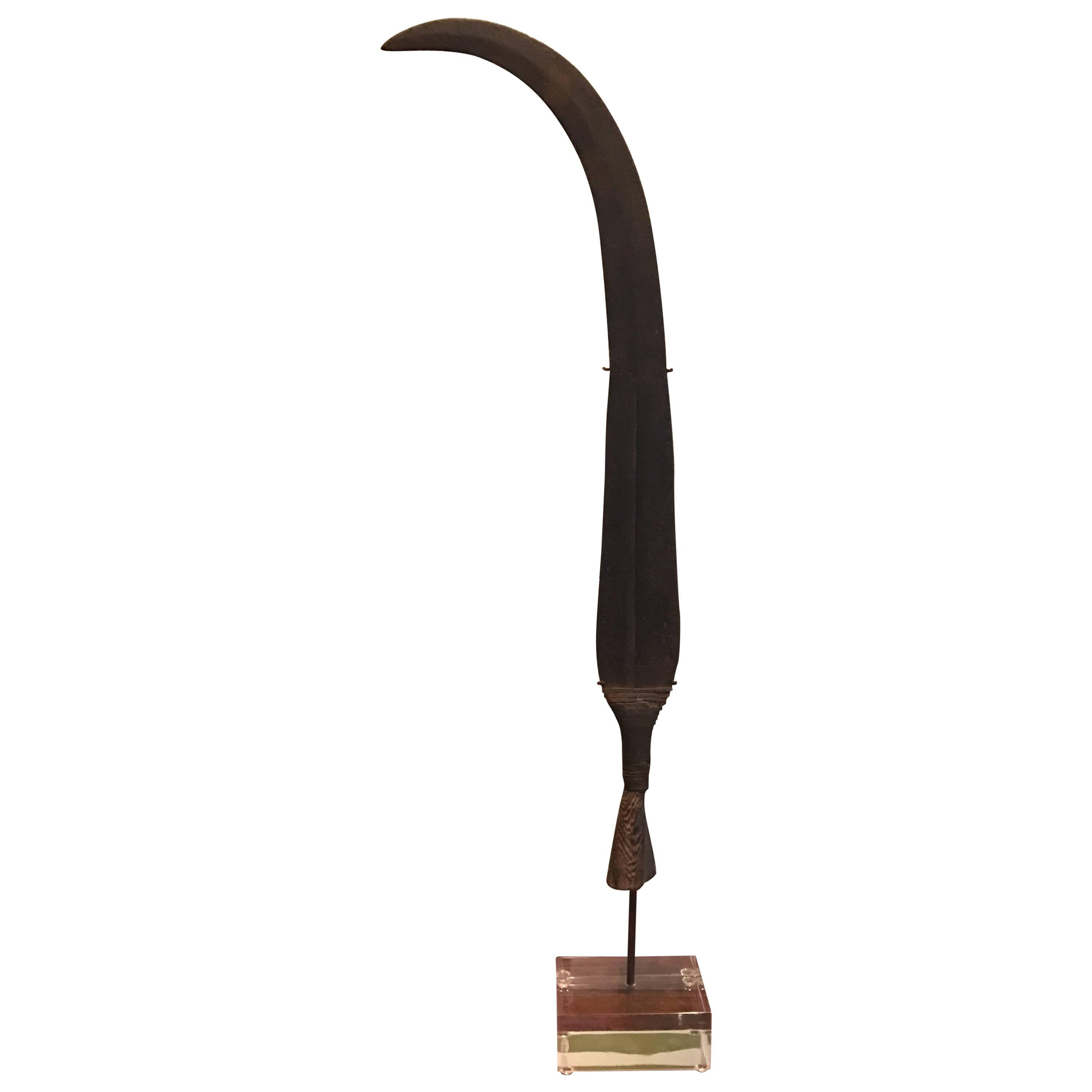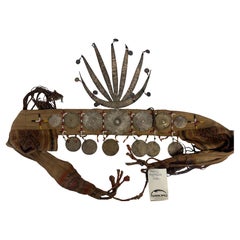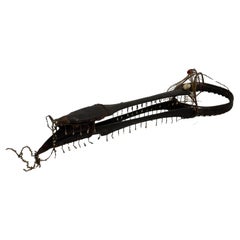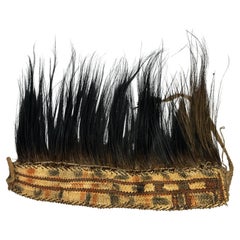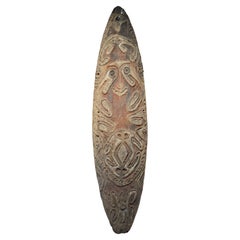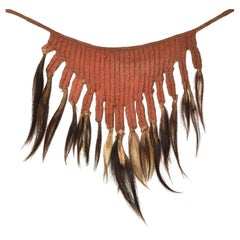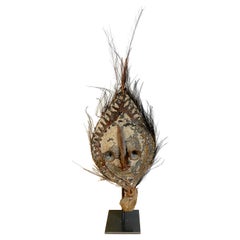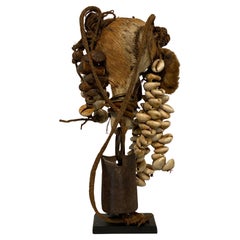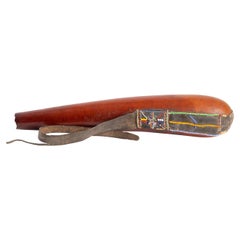Items Similar to A Solomon Islands red feather money coil or 'Tevau'
Want more images or videos?
Request additional images or videos from the seller
1 of 3
A Solomon Islands red feather money coil or 'Tevau'
$35,064.49
£26,112.11
€29,500
CA$48,411.27
A$53,671.05
CHF 28,206.23
MX$656,845.61
NOK 352,267.14
SEK 330,637.95
DKK 224,603.17
About the Item
Santa Cruz, Nendö, late 19th/early 20th century
Retaining an original leaf in which these coils were wrapped.
L. 72 cm (stretched out)
Diam. 34 cm (roll)
One of the most remarkable forms of currency found throughout Oceania are tevau, feather money coils from the Santa Cruz Islands in Temotu Province at the eastern end of the Solomon Islands chain. The manufacture of tevau was localized to the island of Ndende (Nendö), but as valuables they were traded through the Reef and Duff Islands to the north.
The coils are made from the feathers of the scarlet honeyeater (Myzomela cardinalis), known locally as mungau. Throughout much of the Pacific, red feathers are revered as a sacred and spiritually charged material and as such they are a valuable exchange item. The production of tevau is the work of three distinct specialists. One man was responsible for trapping the birds and harvesting their feathers. Another would fix the red feathers into small plates by using tree gum to adhere them to structure of larger pigeon feathers. A third specialist would assemble the plates onto a woven base supported by a bark coil. The specialist knowledge involved in making tevau was held in certain family lines and tightly guarded. According to legend, the knowledge was first taught to humans by forest dwelling spirits, who warned that if the men shared what they had learned they would lose their good fortune.
The value of tevau is determined by its size and quality of the red feathers. A tevau of this size would likely contain the feathers of 300 or more birds and have taken hundreds of hours to make. The value of the coils would decline as the feathers weathered and faded so the most valued were those that were vital, red and fresh. A turtle shell charm placed inside this coil further adds to its value. The stings of coix seeds and small shells that are attached to the piece are a marker of time and labor involved in its manufacture, and are placed at the start, end and center point of the coil. For both spiritual and environmental protection, tevau would be stored wrapped in leaves and suspended from the rafters of houses, where the smoke from fires would ward away insects while wooden charms placed in the wrappings protected against malevolent spirits.
Tevau could be used in payment for high value items such as canoes and the pigs that are central to the village economies in many Pacific cultures. Tevau also played an important role in the payment of bride wealth – the compensation to the bride’s family for the loss of her generative potential as a mother and grower of crops. Other uses for tevau included compensation payments to settle disputes, presentations to ancestral spirits, and as payments for courtesans from the Reef Islands who were purchased to reside in the men’s house.
During the twentieth century, knowledge of how to make tevau largely diminished in the islands, as cash replaced feather money within the local economy. However, in recent years there have been attempts in Temotu Province to revive tevau, and in the year 2000 three men from Noipe village in Santa Cruz were trained in the sacred knowledge of tevau making.
Provenance:
Sammlung Rinck-Hollnberger, Munich (collected in the 1990s)
- Dimensions:Height: 28.35 in (72 cm)Diameter: 13.39 in (34 cm)
- Materials and Techniques:
- Place of Origin:
- Period:
- Date of Manufacture:late 19th/early 20th century
- Condition:Wear consistent with age and use.
- Seller Location:Amsterdam, NL
- Reference Number:1stDibs: LU5458242044432
About the Seller
5.0
Recognized Seller
These prestigious sellers are industry leaders and represent the highest echelon for item quality and design.
Established in 1985
1stDibs seller since 2020
23 sales on 1stDibs
Typical response time: 5 hours
- ShippingRetrieving quote...Shipping from: Maastricht, Netherlands
- Return Policy
Authenticity Guarantee
In the unlikely event there’s an issue with an item’s authenticity, contact us within 1 year for a full refund. DetailsMoney-Back Guarantee
If your item is not as described, is damaged in transit, or does not arrive, contact us within 7 days for a full refund. Details24-Hour Cancellation
You have a 24-hour grace period in which to reconsider your purchase, with no questions asked.Vetted Professional Sellers
Our world-class sellers must adhere to strict standards for service and quality, maintaining the integrity of our listings.Price-Match Guarantee
If you find that a seller listed the same item for a lower price elsewhere, we’ll match it.Trusted Global Delivery
Our best-in-class carrier network provides specialized shipping options worldwide, including custom delivery.More From This Seller
View AllAn exquisite warrior's headdress or 'Kaibauk'
Located in Amsterdam, NL
Amarasi district, Kupang regency, West Timor island, early 20th century
Category
Early 20th Century Timorese Tribal Art
Materials
Metal
An Illongot headdress
Located in Amsterdam, NL
Ifugao, Northern Philippines, 19th century
Decorated with different kinds of beadwork and the bill of a Kalaw bird (hornbill).
Historically, only those who had proven themselves th...
Category
Antique 19th Century Philippine Tribal Art
Materials
Shell, Natural Fiber, Wood, Beads
$2,852
An Asmat headdress decorated with cassowary feathers
Located in Amsterdam, NL
Asmat, Papua Province, Indonesia, Late 19th century
Provenance:
- Collection Rinck Hollnberger, Munich (purchased in the 1980s or 1990s)
Category
Antique Late 19th Century Indonesian Tribal Art
Materials
Natural Fiber, Feathers
A rare Papua 'Gope' Spirit board from the Schulze Westrum collection
Located in Amsterdam, NL
A rare Papua 'Gope' Spirit board from the Schulze Westrum collection
New Guinea, Papua Gulf, probably Urama people, late 19th–early 20th century
Attached to the back are several 'b...
Category
Antique Late 19th Century Papua New Guinean Tribal Art
Materials
Wood
A Polynesian war-club or 'Gata waka'
Located in Amsterdam, NL
Fiji, probably early 20th century
Polynesian culture is traditionally a culture of power and prestige, and there was a fine line between battle and ceremony. Warrior people par exce...
Category
Early 20th Century Fijian Tribal Art
Materials
Hardwood
A Huli wigman's ceremonial headdress
Located in Amsterdam, NL
Papua New Guinea, Central Highlands, Huli people, 1st half 20th century
Crafted from the wearer’s own hair and adorned with colorful bird-of-paradise feathers, flowers, scarab beetl...
Category
20th Century Papua New Guinean Tribal Art
Materials
Shell, Feathers
You May Also Like
Cache-Sexe Papua New Guinea
Located in Point Richmond, CA
Cache-Sexe Papua New Guinea
Culture, Papua New Guinea
Natural fibers, boar’s tails, and pigment
Mid 20th C.
Dimensions: 10 w x 12 h in./13.75 w ...
Category
Mid-20th Century Papua New Guinean Other Tribal Art
Materials
Natural Fiber
Papua New Guinea Talipun, Boiken, Sepik River Region
Located in West Palm Beach, FL
Papua New Guinea: Talipun, Boiken, Sepik River Region
Northern Papua New Guinea, 20th Century
A fine example of the rich cultural heritage of Papua New ...
Category
20th Century Papua New Guinean Tribal Tribal Art
Materials
Shell, Paint, Feathers, Wicker
$2,200 Sale Price
20% Off
A Voodo African Object
Located in Schellebelle, BE
An exceptional Voodoo Objet fro Africa, Uganda ,Buganda Kingdom,
the object is decorated with Shells, Beads, Fiber,seeds and iron,
a Royal fetish used by higher Royalty,
ex-collecti...
Category
Vintage 1960s Ugandan Tribal Art
Materials
Shell, Fabric, Wood
$2,198
African Decorative Object, Gourd
Located in Saint-Ouen, FR
African decorative object, gourd, early 20th century.
Measures: H 11 cm, L 57 cm, W 13 cm.
Category
20th Century African Tribal Tribal Art
Materials
Leather
Amulet from Papua New Guinea
Located in Schellebelle, BE
Exceptional amulet - necklace from Papua New Guinea,
made out of different sorts off shells and fabric,
good, old patina and shine of the object,
powerful and decorative object
Category
Vintage 1950s Asian Tribal Art
Materials
Shell, Fabric
Fulani Currency
Located in Dallas, TX
Nigerian currency crafted by the Fulani tribe. Outlawed in the 19th century by Colonel Phelps. The unusual forms and sizes of ethnographic currencies...
Category
Antique 19th Century Nigerian Tribal Mounted Objects
Materials
Metal
$1,656
More Ways To Browse
Antique Feathers
Feather Art Birds
Folk Art Train
Folk Art Santa
Feather Tree
Antique Traps
Folk Art Bird Tree
Antique Feather Tree
Pigeon House
Shell Money
Antique Canoe
Used Harvest House Furniture
Pig Folk Art
Santa Cruz Used Furniture
Used Wooden Canoe
Wooden Canoe Used
Antique Fire Markers
Antique Furniture Santa Cruz
